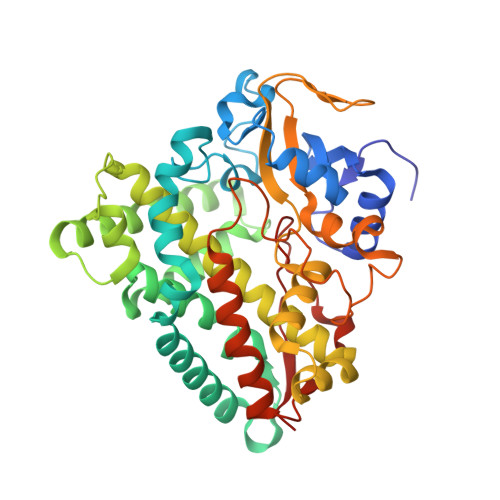CYP154C5 Regioselectivity in Steroid Hydroxylation Explored by Substrate Modifications and Protein Engineering*.
Bracco, P., Wijma, H.J., Nicolai, B., Buitrago, J.A.R., Klunemann, T., Vila, A., Schrepfer, P., Blankenfeldt, W., Janssen, D.B., Schallmey, A.(2021) Chembiochem 22: 1099-1110
- PubMed: 33145893
- DOI: https://doi.org/10.1002/cbic.202000735
- Primary Citation of Related Structures:
6TO2 - PubMed Abstract:
CYP154C5 from Nocardia farcinica is a P450 monooxygenase able to hydroxylate a range of steroids with high regio- and stereoselectivity at the 16α-position. Using protein engineering and substrate modifications based on the crystal structure of CYP154C5, an altered regioselectivity of the enzyme in steroid hydroxylation had been achieved. Thus, conversion of progesterone by mutant CYP154C5 F92A resulted in formation of the corresponding 21-hydroxylated product 11-deoxycorticosterone in addition to 16α-hydroxylation. Using MD simulation, this altered regioselectivity appeared to result from an alternative binding mode of the steroid in the active site of mutant F92A. MD simulation further suggested that the entrance of water to the active site caused higher uncoupling in this mutant. Moreover, exclusive 15α-hydroxylation was observed for wild-type CYP154C5 in the conversion of 5α-androstan-3-one, lacking an oxy-functional group at C17. Overall, our data give valuable insight into the structure-function relationship of this cytochrome P450 monooxygenase for steroid hydroxylation.
- Biocatalysis, Institute of Biotechnology, RWTH Aachen University, Worringerweg 3, 52074, Aachen, Germany.
Organizational Affiliation:



















